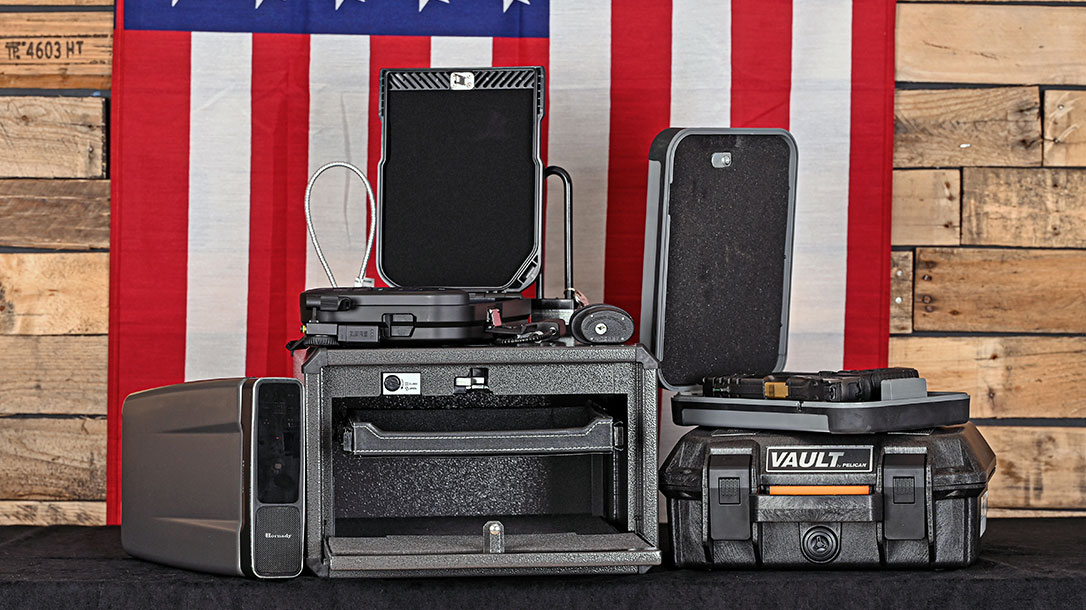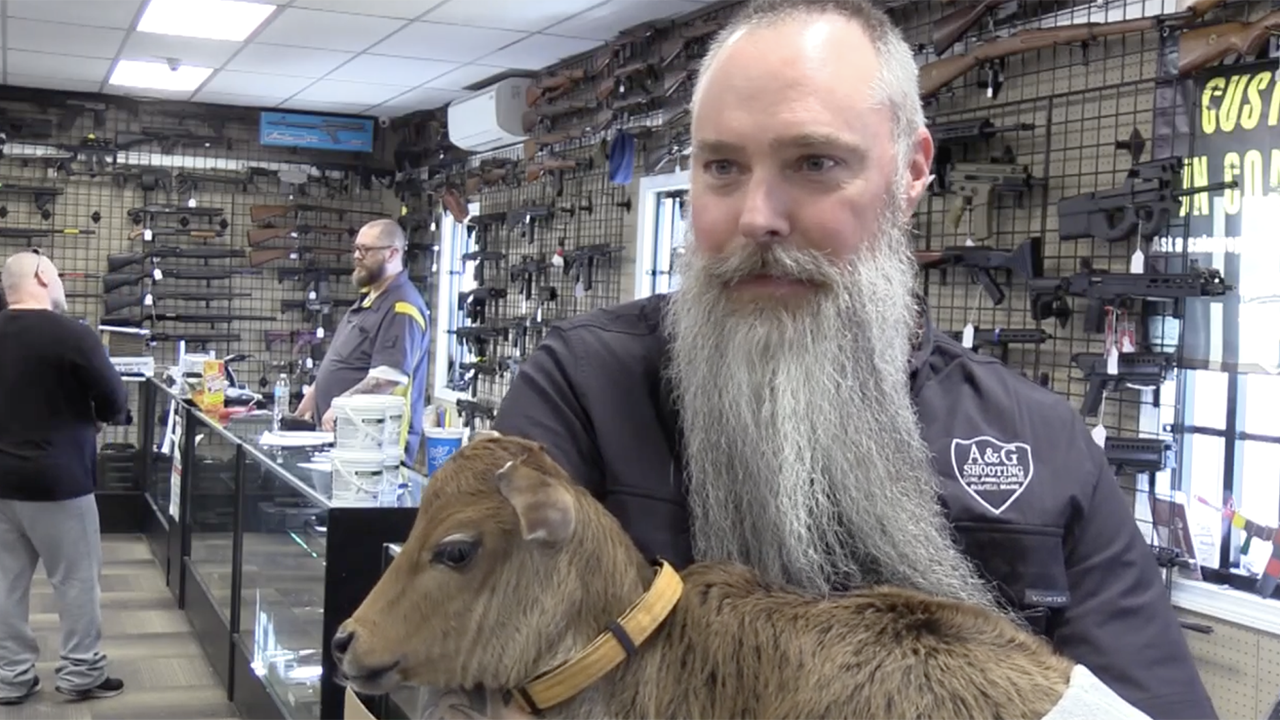We all have responsibilities, and with these responsibilities come expectations. Taking care of your pets, paying bills, and even caring for your personal belongings are just a few examples. Owning a firearm also falls onto that list. However, as a gun owner, the larger responsibility is the safe storage of your firearm(s).
Considerations of Safe Gun Storage
Firearms are used for a variety of reasons, such as fun, sport, and personal protection. While we can celebrate the Second Amendment through gun ownership, it’s crucial to also take on the personal responsibility of gun safety. Not just for yourself and others but for your firearm as well.
Sure, your firearm keeps you safe, but do you keep your gun safe? Protecting your gun may seem silly. However, firearms can fall into the wrong hands or experience damage due to improper storage conditions. The best way to keep you and your firearm safe is by practicing proper, safe gun storage.
Why Lock Up Your Firearms?
Proper gun storage means keeping firearms locked, unloaded, and separate from ammunition. In fact, it is the law in some states. This is because secure firearms prevent access from unauthorized users, like children and adults, preventing unintentional shootings and gun suicides.
One law, for example, is the Child Access Prevention Law—referred to as CAP. CAP requires gun owners to practice responsible firearm storage. Likewise, it holds gun owners responsible if firearms fall into the wrong hands—such as children or teens.
Studies have shown that between 70 and 90% of guns used in suicides, unintentional shootings, and school shootings by individuals under the age of 18 are acquired from the homes of relatives.
Protecting Your Investment
Proper gun storage also keeps your firearms protected from moisture and humidity. When firearms are not cared for properly, they will be susceptible to rust and corrosion. This occurs when there is a chemical reaction to the surrounding environment, causing metals to be eaten away. Iron, oxygen, and water (moisture) are the recipe for rust to occur.
Humid environments with elevated temperatures can cause condensation. As a result, this can leave moisture on the body, barrel, or receiver of your firearm. So, it is important you consider the environment around your storage devices.
The preferred temperature and humidity to store firearms is 70 degrees Fahrenheit at 50% humidity. To ensure proper conditions, a humidity sensor can help determine the environment around your storage device. For example, garages, sheds, and vehicles are ideal environments for corrosion. However, using a dehumidifier in your safe can help reduce moisture and humidity, if necessary.
As an extra safeguard against rust, it is also good to remove your firearms and clean them regularly.
In addition, be cautious about the materials used in the construction of your storage solution. Elements such as formaldehyde, sulfur, and pyrite can cause your firearms to rust quickly. Do your own personal research and make sure you are picking the best option for you.
Theft Prevention
Along with prohibiting unauthorized access and corrosion/rust prevention, theft is another important consideration for securing your firearms. Gun theft is a real issue in America, so don’t assume that it can’t happen to you. Every day in the United States, roughly one firearm is stolen every 90 seconds.
Firearms are commonly stolen from homes and vehicles, with 10 to 15% of those stolen guns used in crimes. While it is possible to recover your stolen firearm (if you are lucky), prevention is always better.
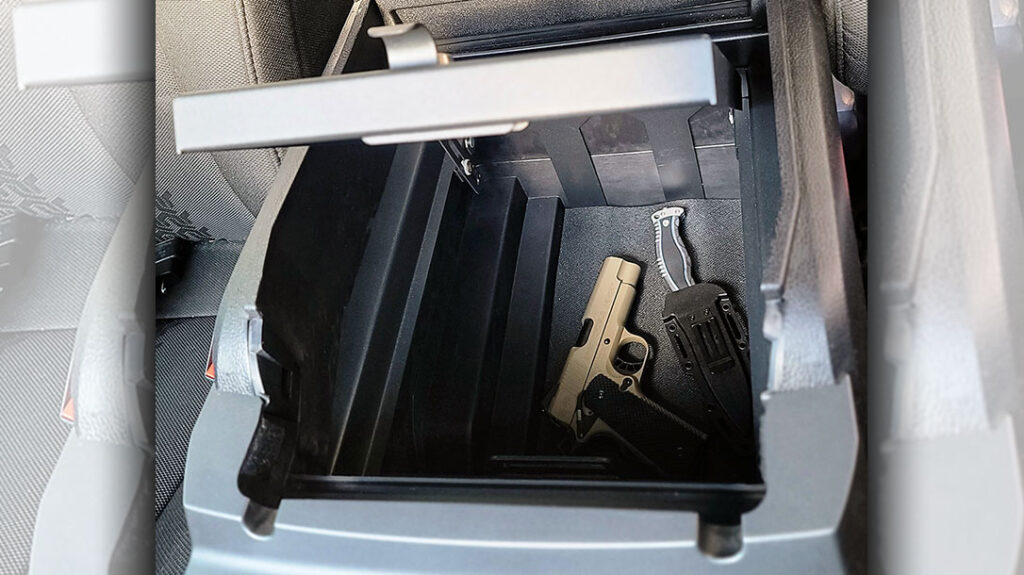
Gun theft is a vicious cycle that needs to be put to an end. Your firearms are an investment, and it would be heartbreaking to watch your hard-earned investment be stolen. Especially when it could have been avoided in the first place.
With all of this said, let’s take a look at some different storage options.
Gun Cases
The first type of gun storage is a gun case. A gun case is classified as a covering made to protect your gun. These cases can protect your firearm from scrapes, dings, and any other type of damage. With gun cases, you have the option between hard cases and soft cases.
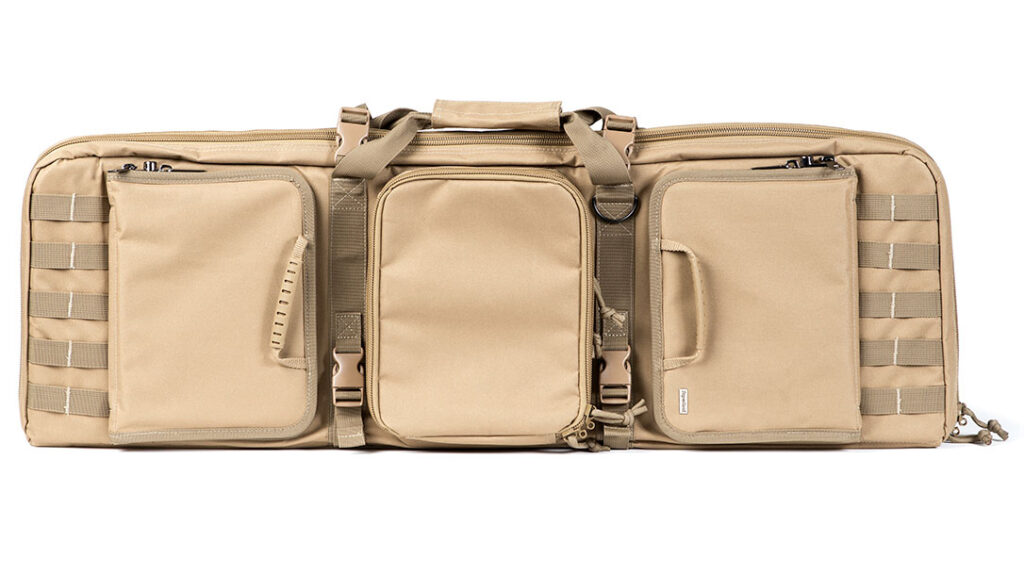
Soft cases are typically made of nylon or ripstop material, while hard cases are made from durable plastics and metals. Likewise, soft cases come with a zipper mechanism, and hard cases are lockable.
These cases offer different varieties made to fit rifles or handguns and make transportation easy. Additionally, many are customizable and designed with foam padding on the inside. Plus, they are lightweight, which in turn makes them easy to transport.
Gun Cabinets
Gun cabinets are another option for storing rifles and shotguns. These types of storage solutions are typically made from wood and come with a glass window, displaying the firearms inside. However, the downfall with gun cabinets is that they are not secure, nor fire or waterproof. But they are often a cheaper option compared to gun safes.
Gun Safes
In my opinion, gun safes are the best and most popular option. Safes are secure, lockable containers with an exterior constructed of steel. The locks can be either mechanical, digital, or biometric.
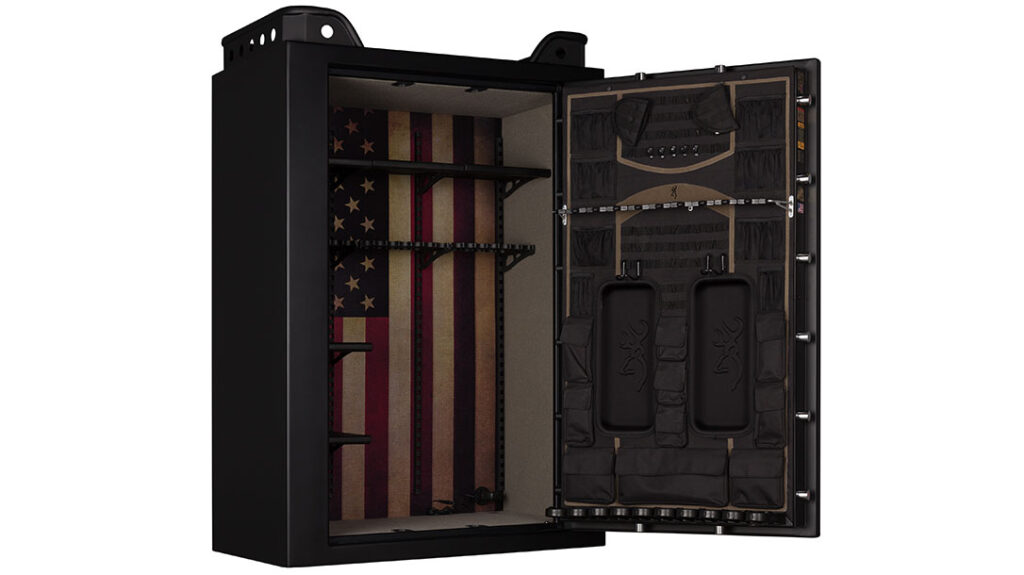
This type of gun storage is heavy, typically weighing between two hundred and 1,000 pounds, making it difficult to move. Likewise, many gun safes can be mechanically anchored to a floor or wall. As a result, this makes them hard to steal.
In addition, some safes offer fire protection ranging from 30 to 150 minutes, depending on the model. For this reason, many opt to store personal belongings such as money, jewelry, and important documents along with their firearms. Finally, available in many sizes and configurations, safes can easily accommodate guns of all types and sizes.
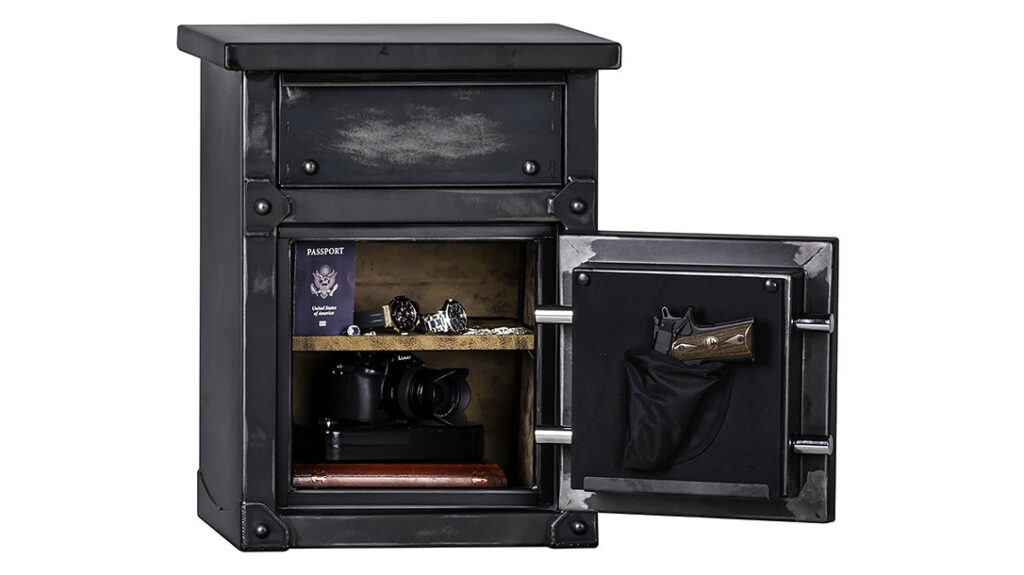
Concealment Furniture
Lastly, you have the option of concealment furniture. Concealment furniture is a piece of furniture that is transformed to have a hidden gun compartment inside. For example, it could be a picture frame, dresser, bookcase, coffee table, etc.
This type of gun storage is great for securing your firearm in plain sight without drawing unwanted attention. Not to mention, many of the options can be customized to fit your particular needs, providing the ideal solution.
Taking the Extra Step to Secure Your Firearms
The addition of a trigger or cable lock provides another level of security to your storage solution. Trigger locks are placed around the trigger guard, like a lockable shroud, to prevent access to the trigger. Similarly, cable locks run a cable through essential components of the firearm (determined by the platform) and lock. Thus rendering the gun unable to fire.
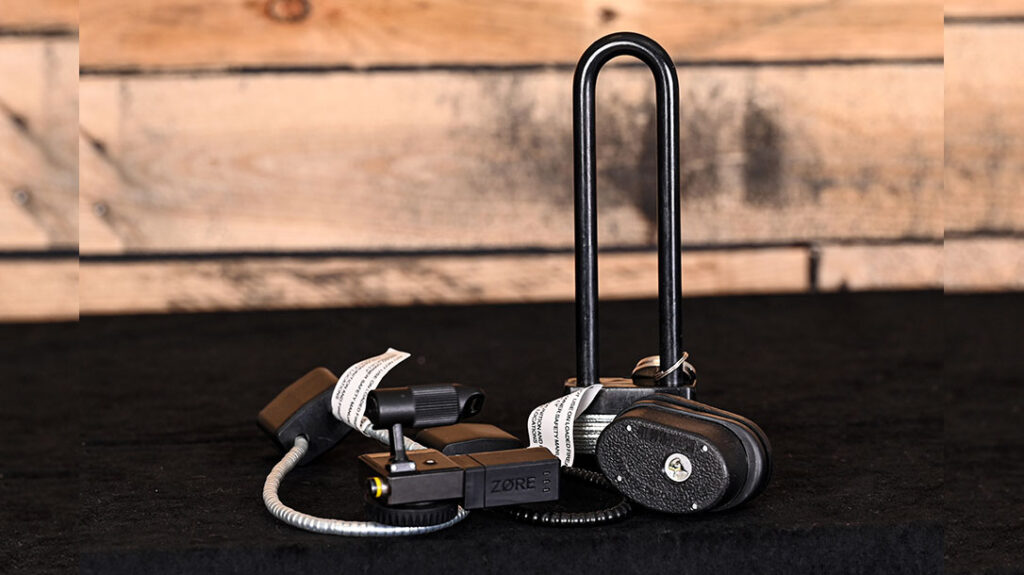
You should also carefully consider where you are going to put your storage device. It is recommended that the gun case, cabinet, or safe be out of sight and out of mind. Displaying it in a busy area of your home will attract unwanted attention.
No matter what you choose, set realistic standards for what storage option is right for you. Do you have children? Are you living with others? These are important questions to ask yourself. Your firearm is an investment, and you should view your storage solution the same.
Closing Remarks
Concerning firearms, it all boils down to the safety of yourself and others. Safety is the number one rule of gun ownership and handling. If treated improperly, firearms are dangerous tools with the potential to cause serious harm or death to yourself or others.
Gun ownership is a big responsibility that should not be taken lightly. In your hands or out of your hands, safety is paramount, with no room for exceptions or excuses.
Don’t be lazy. Keep your firearm locked away, separate from the ammo. It’s up to you to do your due diligence as a gun owner. Responsible gun ownership is the best way to demonstrate to the world how great the gun community is.
Your firearm and community are counting on you. Do not let them down.
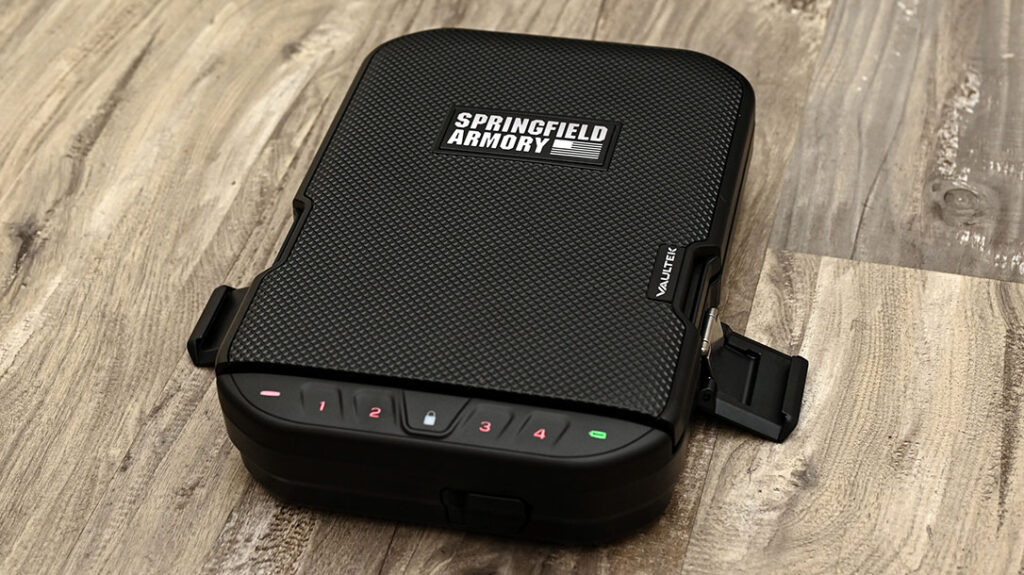


Didn’t find what you were looking for?
Read the full article here

